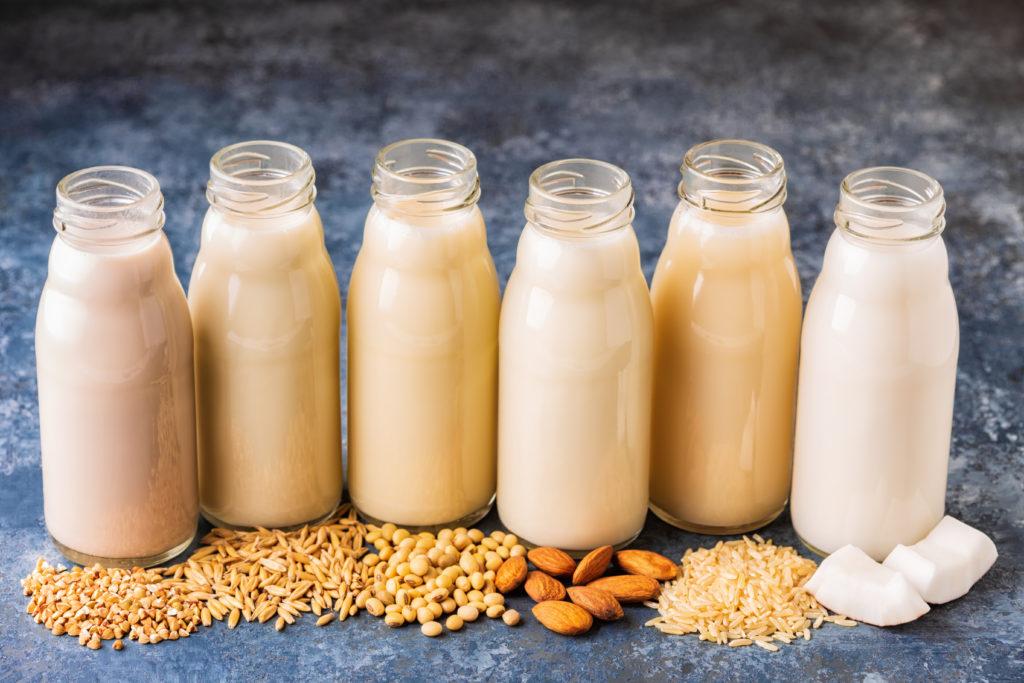Milk choice
The best dairy alternative milk is a subjective matter and depends on personal taste preferences and dietary needs. Here are some of the most popular dairy alternative milks:
- Almond milk – made from ground almonds and water, it has a slightly nutty flavor and is low in calories.
- Soy milk – made from soybeans and water, it has a creamy texture and is high in protein.
- Coconut milk – made from the flesh of coconuts and water, it has a rich, creamy texture and a distinct coconut flavor.
- Oat milk – made from oats and water, it has a mild, slightly sweet flavor and is often used as a milk substitute in baking.
- Rice milk – made from milled rice and water, it has a sweet, light flavor and is often used as a dairy alternative for those with nut allergies.
Ultimately, the best dairy alternative milk is the one that you enjoy the most and fits your dietary needs. It’s important to read the ingredient labels to ensure the product is fortified with the necessary nutrients, such as calcium and vitamin D, especially if you’re using it as a milk substitute in your diet.
When it comes to the environmental impact of dairy alternatives, there is no clear answer as it depends on various factors such as the method of production, the source of ingredients, and the packaging used. However, here are a few dairy alternative milk options that are generally considered to be better for the environment:
- Oat milk: Oats require less water to grow compared to other crops and the production of oat milk results in lower greenhouse gas emissions compared to dairy milk.
- Soy milk: Soybeans are a good source of protein and require less water to grow compared to almonds, rice, or coconut. However, soybean production has been associated with deforestation in some regions, so it’s important to look for soy milk that is sustainably sourced.
- Hemp milk: Hemp is a fast-growing crop that requires little water and no pesticides. Additionally, hemp milk is often sold in recyclable cartons, which is better for the environment than plastic bottles.
- Almond milk: Almonds require a lot of water to grow, so the production of almond milk can be environmentally taxing. However, some almond milk producers are using more sustainable farming practices and water-saving techniques to reduce their environmental impact.
It’s also worth noting that the environmental impact of dairy alternatives can vary depending on the specific brand and product. It’s important to look for products that are sustainably sourced and packaged in eco-friendly materials.
Arabica and Robusta are the two most popular types of coffee beans. Arabica beans are considered to be of higher quality and are the preferred choice for specialty coffee. These beans are grown at higher altitudes and have a complex flavor profile with hints of chocolate, fruit, and nuts. On the other hand, Robusta beans are hardier and more resistant to pests and diseases. They have a stronger, more bitter taste and are commonly used in commercial coffee blends.
Another important factor that affects the flavor of coffee beans is the roasting process. The degree of roasting, from light to dark, affects the flavor and strength of the coffee. Light roasts are generally more acidic and have a brighter flavor, while darker roasts have a more robust and full-bodied taste.
It’s important to purchase high-quality coffee beans from a reputable source to ensure that you’re getting the best flavor and aroma. When storing coffee beans, it’s best to keep them in an airtight container away from moisture, heat, and light.
In conclusion, coffee beans play a crucial role in determining the taste and quality of coffee. Whether you prefer the complex flavors of Arabica or the robust taste of Robusta, it’s essential to choose high-quality beans and store them properly to ensure that you get the most out of your coffee experience.


